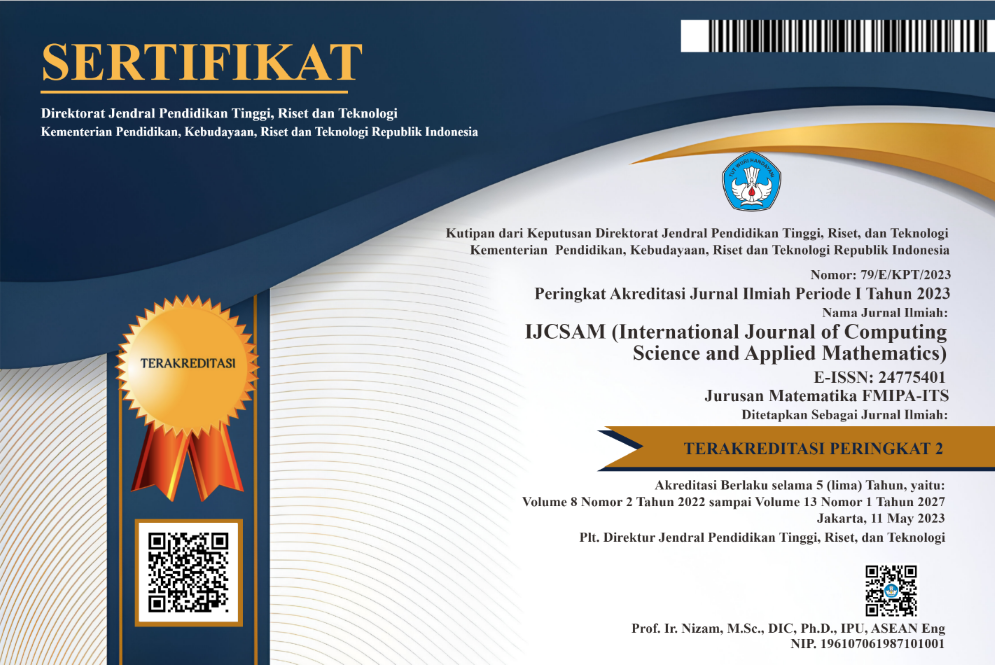Identification of Rainfall Intensity by Using Bahir Dar C-band Weather Radar products
Abstract
Keywords
Full Text:
PDFReferences
T. Seliga and V. Bringi, “Potential use of radar differential reflectivity measurements at orthogonal polarizations for measuring precipitation,” Journal of Applied Meteorology, vol. 15, no. 1, pp. 69–76, 1976.
T. Seliga and V. Bringi, “Differential reflectivity and differential phase shift: Applications in radar meteorology,” Radio Science, vol. 13, no. 2, pp. 271–275, 1978.
A. Jameson, “Microphysical interpretation of multi-parameter radar measurements in rain. part i: Interpretation of polarization measurements and estimation of raindrop shapes,” Journal of the Atmospheric sciences, vol. 40, no. 7, pp. 1792–1802, 1983.
A. Jameson and E. Mueller, “Estimation of propagation-differential phase shift from sequential orthogonal linear polarization radar measurements,” Journal of Atmospheric and Oceanic Technology, vol. 2, no. 2, pp. 133–137, 1985.
A. Jameson, “Microphysical interpretation of multiparameter radar measurements in rain. part iii: Interpretation and measurement of propagation differential phase shift between orthogonal linear polarizations,” Journal of the Atmospheric Sciences, vol. 42, no. 6, pp. 607–614, 1985.
M. Sachidananda and D. Zrnic, “Zdr measurement considerations for a fast scan capability radar,” Radio Science, vol. 20, no. 4, pp. 907–922, 1985.
M. Sachidananda and D. Zrnic, “Differential propagation phase shift and rainfall rate estimation,” Radio Science, vol. 21, no. 2, pp. 235–247, 1986.
N. Balakrishnan and D. Zrni´c, “Estimation of rain and hail rates in mixed-phase precipitation,” Journal of the Atmospheric Sciences, vol. 47, no. 5, pp. 565–583, 1990.
S. Giangrande and A. Ryzhkov, “Estimation of rainfall based on the results of polarimetric echo classification,” Journal of applied meteorology and climatology, vol. 47, no. 9, pp. 2445–2462, 2008.
N. Balakrishnan and D. Zrnic, “Use of polarization to characterize precipitation and discriminate large hail,” Journal of the atmospheric sciences, vol. 47, no. 13, pp. 1525–1540, 1990.
J. Picca and A. Ryzhkov, “A dual-wavelength polarimetric analysis of the 16 may 2010 oklahoma city extreme hailstorm,” Monthly Weather Review, vol. 140, no. 4, pp. 1385–1403, 2012.
M. Vojtesak, K. Martin, and G. Myles, “Swanea (southwest asianortheast africa): A climatological study. volume 1. the horn of africa,” AIR FORCE ENVIRONMENTAL TECHNICAL APPLICATIONS CENTER SCOTT AFB IL, Tech. Rep., 1990.
L. Ayalew and H. Yamagishi, “Slope failures in the blue nile basin, as seen from landscape evolution perspective,” Geomorphology, vol. 57, no. 1-2, pp. 95–116, 2004.
S. Kebede, Y. Travi, T. Alemayehu, and T. Ayenew, “Groundwater recharge, circulation and geochemical evolution in the source region of the blue nile river, ethiopia,” Applied Geochemistry, vol. 20, no. 9, pp. 1658–1676, 2005.
S. Awulachew, M. McCartney, T. Steenhuis, and A. Ahmed, A review of hydrology, sediment and water resource use in the Blue Nile Basin. IWMI, 2009, vol. 131.
A. Swain, “Challenges for water sharing in the nile basin: changing geopolitics and changing climate,” Hydrological Sciences Journal, vol. 56, no. 4, pp. 687–702, 2011.
M. Fazzini, C. Bisci, and P. Billi, “The climate of ethiopia,” in Landscapes and landforms of Ethiopia. Springer, 2015, pp. 65–87.
M. Gosset and I. Zawadzki, “Effect of nonuniform beam filling on the propagation of the radar signal at x-band frequencies. part i: Changes in the k (z) relationship,” Journal of Atmospheric and Oceanic Technology, vol. 18, no. 7, pp. 1113–1126, 2001.
A. Illingworth, T. Blackman, and J. Goddard, “Improved rainfall estimates in convective storms using polarisation diversity radar,” Hydrology and Earth System Sciences Discussions, vol. 4, no. 4, pp. 555–563, 2000.
P. Austin, “Relation between measured radar reflectivity and surface rainfall,” Monthly Weather Review, vol. 115, no. 5, pp. 1053–1070, 1987.
C. Collier, “Developments in radar and remote–sensing methods for measuring and forecasting rainfall,” Philosophical Transactions of the Royal Society of London. Series A: Mathematical, Physical and Engineering Sciences, vol. 360, no. 1796, pp. 1345–1361, 2002.
DOI: http://dx.doi.org/10.12962%2Fj24775401.v5i2.4935
Refbacks
- There are currently no refbacks.
View My Stats

International Journal of Computing Science and Applied Mathematics by Pusat Publikasi Ilmiah LPPM, Institut Teknologi Sepuluh Nopember is licensed under a Creative Commons Attribution-ShareAlike 4.0 International License.
Based on a work at https://iptek.its.ac.id/index.php/ijcsam.






